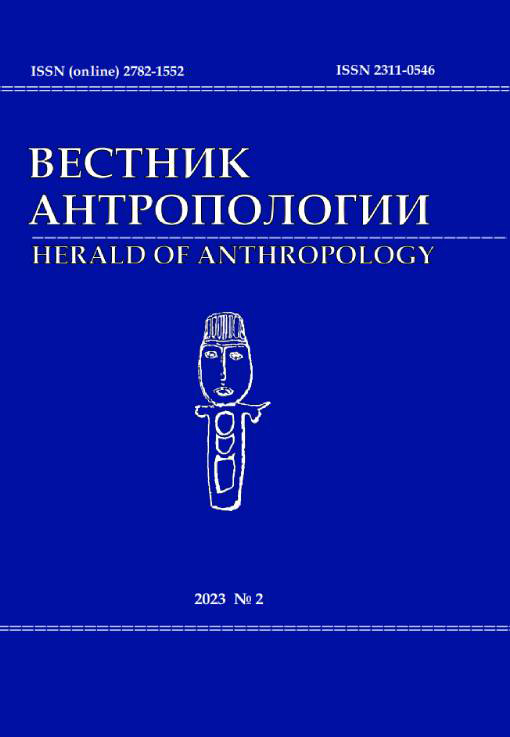Food as a Marker of Identity and a Factor of Integration: Reflections on Interactions of “Strangers” and “Locals” (The Case of USA)
DOI: 10.33876/2311-0546/2023-2/267-276
Keywords:
food, Americans, immigrants, identity, integrationAbstract
On the example of the USA (including field materials collected by the author), the article examines the role of food as a marker of identity and a factor of integration in the interactions of immigrants with the local population. The host society dictates its standards, which immigrants are forced to follow at least outside the home, but their familiar elements that persist at the everyday, home level are also transmitted outside. Food acts as a tool that both delineates the cultural boundary and blurred it, the interaction of “alien” and “local” changes the idea of “American food”. National food supports the group identity of immigrants, its connection with the past. For migrants, it is important to find products typical for the country of origin, to cook familiar dishes. Immigrants’ commitment to their food and their dietary routine and etiquette is often very enduring. Usual food turns out to be a comfortable environment in a strange surrounding. The Americans try to instill American food traditions in immigrants, to teach them how to eat American style. American attitudes towards various immigrant groups are projected onto their food and ethnic cuisines. But the settlers not only adopt local food traditions, but also change the gastronomic landscape themselves, influence the food traditions of the host community. Traditions are steadfastly preserved in the cuisine, but changes inevitably occur, demonstrating a desire and willingness to integrate, or vice versa, a desire to isolate. For the host society to make “outsiders” “ours” means, among other things, teaching them to eat “correctly”, “as is customary”. But integration is a mutual process that changes both “strangers” and “locals”. The change in perceptions of “American food” demonstrates this clearly.





















